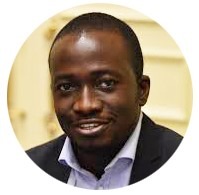By Nicoletta Metri
Nigeria has a diverse geography, with climates ranging from arid to humid equatorial, and hundreds of languages spoken. The land area is close to a million square kilometers with only a few urban centers that contain the bulk of commercial activity and disposable income. When providing reliable broadband networks in rural areas is not sustainable for commercial operators, the Community Network model can provide an individual-centered Internet, deployed and operated by citizens to meet their own communication needs.
The Internet Society’s Nigeria Chapter, in collaboration with the Ahmadu Bello University and several other community stakeholders, is developing a Community Network in Zaria. Zaria is a symbolic town in Northern Nigeria that is rich in culture, agriculture, and education institutions. The project “Zaria Community Network and Culture Hub”, supported by the Internet Society Foundation and its Beyond the Net Grant Programme, will bring wireless hotspots to campuses and public locations, while helping to establish an education hub to strengthen the efficiency of existing institutions.

“We believe in the CN’s model as a game changer in Nigeria and we selected Zaria as a pilot location for what we hope will be replicated in multiple towns and villages around the country,“says the President of the Nigeria Chapter Dewole Ajao. “Using existing infrastructure, the project will demonstrate how collaboration, stakeholder engagement, and capacity building can lead to a sustainable development model and richer lives for entire communities. Lower costs of access will encourage to increase the Internet use and free up scarce personal income for other basic needs.”
What are the key components of the project plan?
“First of all the stakeholder engagement,” explains Dewole. “We recognize the importance of involving the target community at all levels. From the Heads of Institutions to Faculty members, from the Network Engineers to the local youth. The network infrastructure requires significant funding and it will be phased to be productive at each step. In the first phase, we intend to use lower cost hardware and wireless connectivity to reach all the major research and education entities. Experience in similar exercises has shown that power supply is a critical success factor. Due to limited funding, we have opted to provide solar backup power to 50% of the locations involved. Power backup will go to institutions who are less likely to have their own power generating sets. Finally, a learning management system will be hosted in the University data center and made available to all participants.”
This project is definitely a great opportunity for Zaria. The planning and deployment of the network is led by volunteers who train local people in the ongoing management of the network. While community operation helps to keep running-costs low, it also increases the earning potential and skills of the participating residents.
What sustainability model will this project use?
“Sustainability is very key to our list of priorities. A model that has worked elsewhere is for the community to register a corporate/cooperative entity that will operate the “business” using the sustainability models the community decides on. Partners like us will continue to provide aid and technical support to help the project succeed.”
Existing examples provide concrete evidence that Community Network development can prompt positive effects to help communities leverage technology for socio-economic empowerment. We have gained experience from Guifi.Net, Zenzeleni Network, Rhizomatica, and Wireless For Communities, all successful projects proving that the technical side of the community network model can be replicated.
